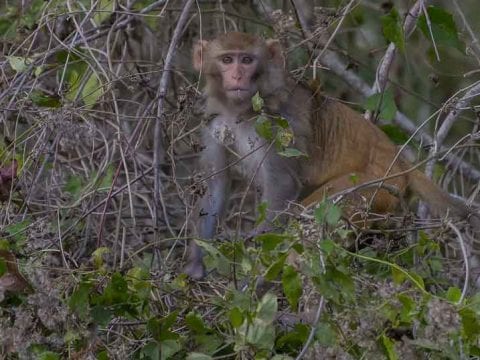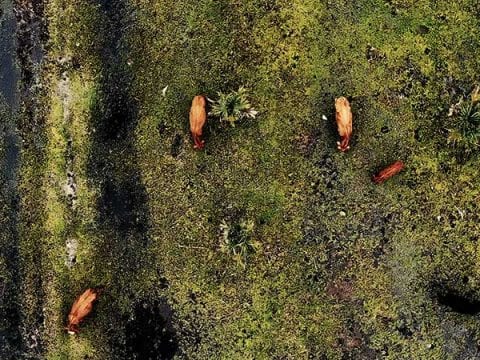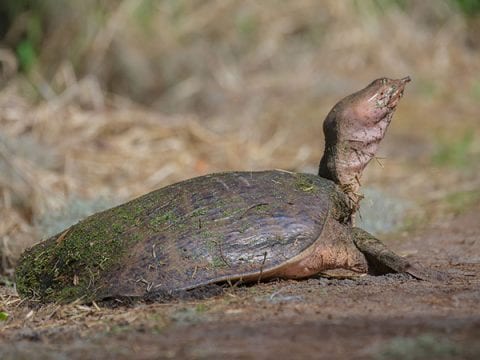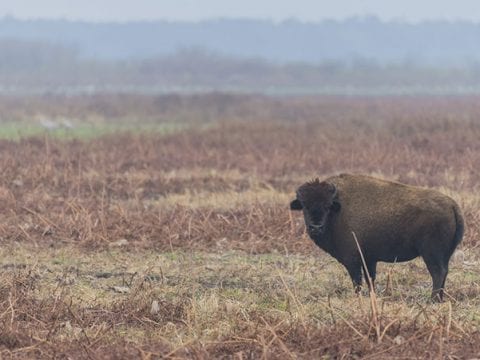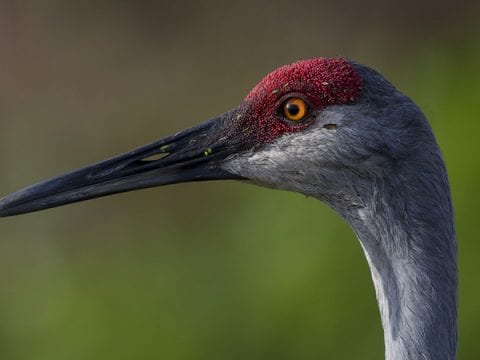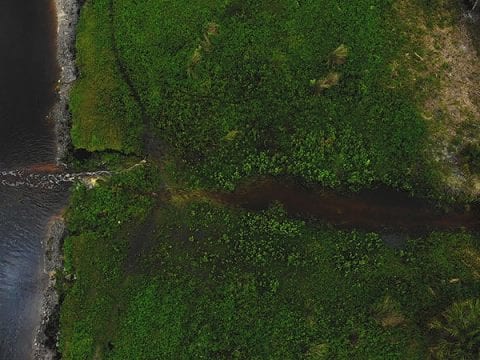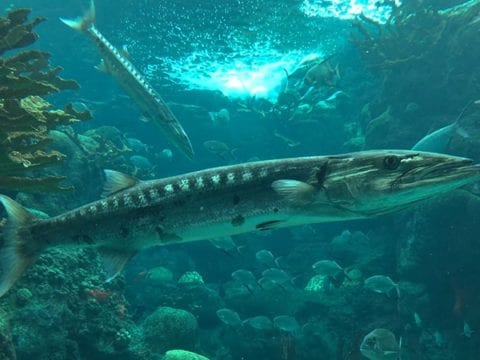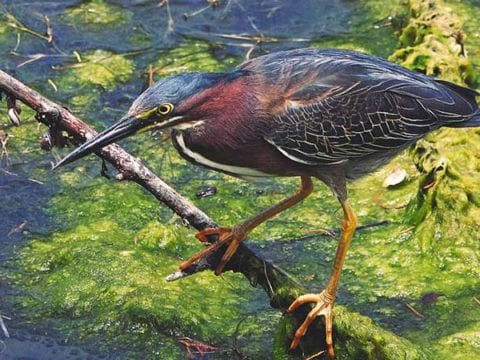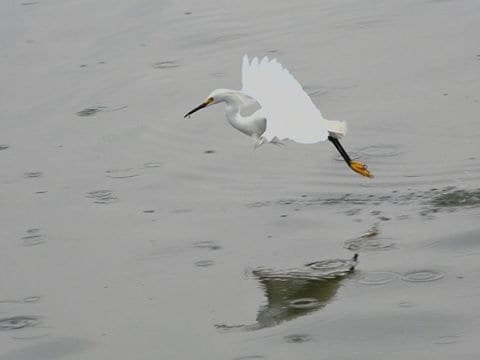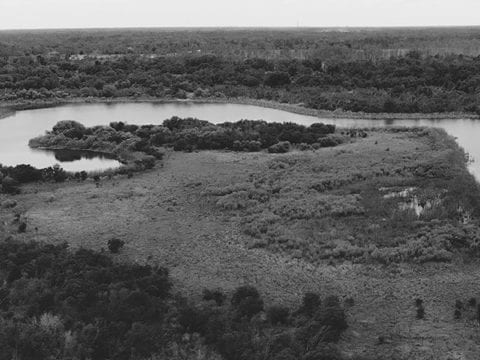Table of Contents
I spent last week at Canaveral National Seashore and produced a video of my visit. I spent a lot of time filming manatees though at the manatee viewing center. It’s a dock about half way down across from the beach which overlooks Mosquito Lagoon. From there, at the right time, you’ll find a large number of manatee gathering. On this day they didn’t do much but come up for air. Here is a short 4K wildlife video of what I saw and I included some West Indian Manatee facts below.
West Indian Manatee Facts
- Scientific name: Trichechus manatus
- Also known as sea cow and the American manatee
- Manatees are distant relatives of elephants-they both have tough skin and bristle-like hair called vibrissae that covers their entire body
- When they swim they leave footprints (oval shaped ripples) in the water
- Years ago, people mistook manatees as mermaids. In fact, Christopher Columbus was the first person (recorded) that mistook them for being a mermaid.
- They are able to hold their breath for 20 minutes and regularly breathe every few minutes
- Florida has a record of 5,000 manatees in existence
- They are the largest surviving member of the aquatic mammal order known as Sirenia
- In the 1970’s, the West Indian Manatee was listed as an Endangered Species because only a several hundred were left
- Florida manatees can live up to 28 years in the wild
- A captive name Snooty lived for 69 years
Identification
Three species of manatee exist: Amazonian, West Indian and West African. The West Indian Manatee is divided into two different species: Caribbean Manatee and Florida Manatee. Manatees are large greyish-brown mammals that have two flippers and large spoon tail.
It can be very difficult to tell the difference between a male and female. Viewing the underside of a manatee will allow a person to locate their genitals. The male genitalia is located below their navel while female genitalia are located above the anus. Females can also be defined by a calf nursing from their mammaries which are located beneath their pectoral fins.
Manatees are slow moving mammals that like to hang out on the water’s surface. A lot of algae can be found on a manatee’s back because algae thrives in wet areas. While this may look uncomfortable, manatees do not seem to mind. As an added bonus, algae may help to block out the harmful rays of the sun. Manatees also have sensitive tactile hairs that cover their entire bodies called vibrissae. Each hair is a vibrissal apparatus that is known as a follicle-sinus complex. Vibrissae are blood filled sinuses that are bound by light connective tissues that have sensitive nerve endings that provide feedback to the manatee.
A subspecies of the West Indian Manatee is called the Antillean Manatee and they can be found throughout the Northwestern Atlantic Ocean, Mexico, Brazil and the Caribbean. Antillean Manatees were hunted by local natives and sold to European explorers for food years ago. Today, they are being threatened by the loss of their habitats, by vessel strikes, by poachers and the entanglement of fishing gear.
Size
Length
- They are 4-4.5 feet when born
- Full grown manatees can grow up to 13 feet long
Weight
- They weigh 60-70 pounds when born
- Full grown manatees weigh 800-1,200 pounds
Behavior
West Indian Manatees are very agile in water and they can be seen doing somersaults, rolls and even swimming upside-down. They are territorial mammals and usually aren’t concerned about predators. Killer whales and sharks are predators of the manatee but aren’t usually found in their habitats. They usually graze for 5 or more hours a day and consume 4%-10% of their body weight in wet vegetation per day. This tears up their molars, which are replaced many times throughout their lives.
Manatees will eat each other’s feces to gather information about one’s reproductive status or dominance.
They are active both day and night and will rest for a few hours near the water surface or at the bottom of the water source.
Habitat
West Indian Manatees live in shallow calm rivers, canals, coastal areas, saltwater bays or estuaries. They move from freshwater to saltwater fluidly. During the summer time, some choose to travel north to look for natural springs and man-made power plants. They can suffer from cold stress in weather that is 68 degrees. The West Indian Manatee lives in the West Indies, Caribbean and shallow coastal areas.
In Florida, there are large concentrations of manatees in the Crystal River, the Blue Springs regions, North Florida, the Atlantic Coast and the Florida Gulf Coast.
Diet
Manatees are mostly herbivores and they feed on over 60 different types of aquatic plants, both freshwater and saltwater. They eat algae and weeds, they are grazers. When the tide is low, they will feed on leaves and grass. They will consume some fish, turtles and invertebrates. They also require freshwater for drinking purposes.
A manatee can eat a 10th of their weight in 24 hours.
Reproduction
The strongest relationship between a mother and a baby is the strongest among manatees who have a strong social bond with one another. Female manatees carry their babies for 12 months. When born, baby weighs about 66 pounds and they are 4-4.5 feet long. They are referred to as a calf. After birth, the calf will stick close to its mother for one or two years. By sticking close by, the calf can learn location for food, rest areas, water refuges and travel routes.
Females usually give birth to a calf every two to five years. A West Indian Manatee female is typically very solitary but will form mating herds while she is in heat. Females usually breed successfully when they are between the ages of 7 and 9 years old. Alternatively, they are capable of reproduction as young as 4 years old and most males reach sexual maturity by the time they are 3-4 years old. Males circle around mating herds when a female is ready to mate but he does not offer any parental care once they have mated. Juveniles will group together with a few others to form a herd to partake in reproductive activities where female manatees are in heat.
Their gestation period is 12-14 months. Just one calf is born on average but there are some rare occasions where two have been born. A calf is born with molars so that they can eat sea grass within the first three weeks after they were born. Manatees who survive into adulthood will typically have between five and seven babies between the ages of 20 and 26.
Q&A
Are manatees endangered?
Manatees were removed from the endangered list in 2016, but they are now on the threatened list. The manatee population had improved which caused the change.
- 1972 – Manatees were added to endangered species list
- 1991 – Manatee population 1,267
- 2016 – Manatee population 6,300

